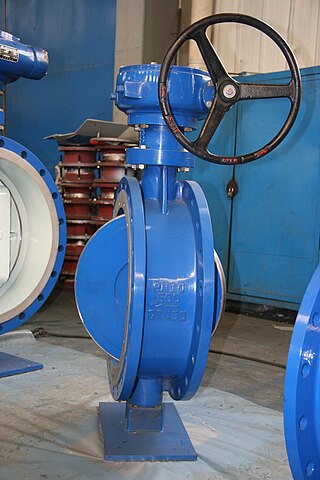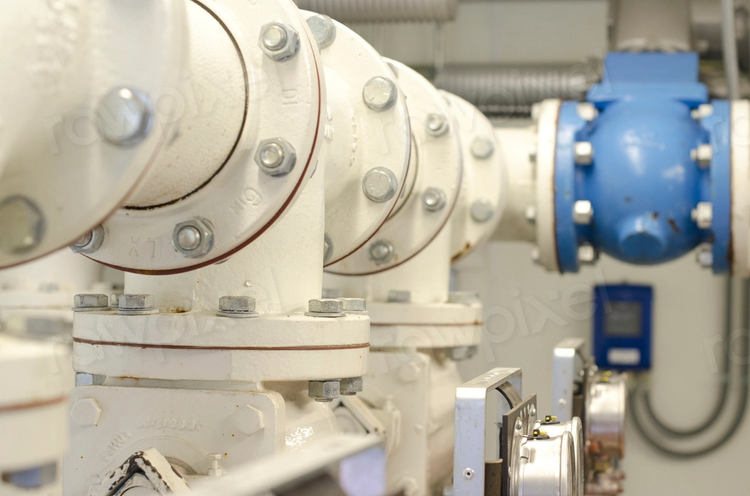Butterfly valves are essential components in various industries, used primarily to regulate the flow of liquids and gases through a pipe system. Their design and operation make them ideal for applications requiring quick shut-off and modulation. Understanding how butterfly valves work involves exploring their construction, types, operating principles, and applications.
Construction and Design
 A butterfly valve consists of several key components:
A butterfly valve consists of several key components:
- Body: The main housing that holds all other parts together, typically made of metal or plastic.
- Disc: A flat, circular plate positioned in the center of the valve. It rotates to control the flow.
- Stem: The rod that connects the actuator (manual handle, gear, or automatic actuator) to the disc.
- Seat: A seal around the inner circumference of the body, ensuring a tight closure when the disc is in the closed position.
- Actuator: The mechanism that moves the stem and disc. This can be a lever, handwheel, or automated device.
The simplicity of these components contributes to the valve’s cost-effectiveness and reliability.
Types of Butterfly Valves
Butterfly valves come in various types, each suited for specific applications:
- Wafer Type: Designed to fit between two flanges in the piping system. They are held in place by bolts that pass through the flanges and the valve body.
- Lug Type: Similar to wafer valves but with threaded inserts (lugs) on both sides of the valve body. This design allows the valve to be installed and removed without disrupting the pipeline.
- Double Offset (High-Performance): Features a disc that is offset from the centerline of the valve body and the seat. This design reduces friction and wear, making it suitable for high-pressure and high-temperature applications.
- Triple Offset: Adds a third offset, providing a cam-like motion to the disc. This minimizes contact between the disc and seat during operation, enhancing durability and sealing performance.
Operating Principles
The operation of a butterfly valve is straightforward. The disc rotates around its central axis, allowing it to either obstruct or permit flow through the valve. Here’s a detailed look at the process:
- Open Position: When the actuator turns the stem, the disc rotates parallel to the flow, creating minimal obstruction and allowing fluid or gas to pass through easily.
- Throttling Position: By partially rotating the disc, the flow can be regulated to a desired level. This is useful for controlling flow rates in various applications.
- Closed Position: When the disc is perpendicular to the flow, it fully obstructs the passage, stopping the flow entirely. The tight seal between the disc and seat ensures minimal leakage.
The quarter-turn action (90-degree rotation) of butterfly valves provides quick and efficient operation, making them suitable for applications requiring frequent opening and closing.
Applications
Butterfly valves are versatile and find use in numerous industries:
- Water Treatment: Used for isolation and flow regulation in pipelines.
- HVAC Systems: Regulate air flow in heating, ventilation, and air conditioning systems.
- Chemical Processing: Handle corrosive and non-corrosive fluids with appropriate material choices.
- Oil and Gas: Manage the flow of oil, gas, and other hydrocarbons.
- Food and Beverage: Maintain hygiene standards while controlling the flow of liquids and gases in processing lines.
Advantages and Considerations
The advantages of butterfly valves include:
- Compact Design: Requires less space compared to other valve types.
- Cost-Effective: Simple construction leads to lower manufacturing and maintenance costs.
- Quick Operation: Fast quarter-turn action.
- Versatility: Suitable for a wide range of applications.
However, butterfly valves may not be ideal for applications requiring tight shut-off against high pressure due to potential leakage past the disc. Proper material selection and design considerations can mitigate these issues.
In summary, butterfly valves are crucial components in many systems, providing efficient flow control with a simple and robust design. Their versatility and ease of use make them indispensable in various industrial and commercial applications.

